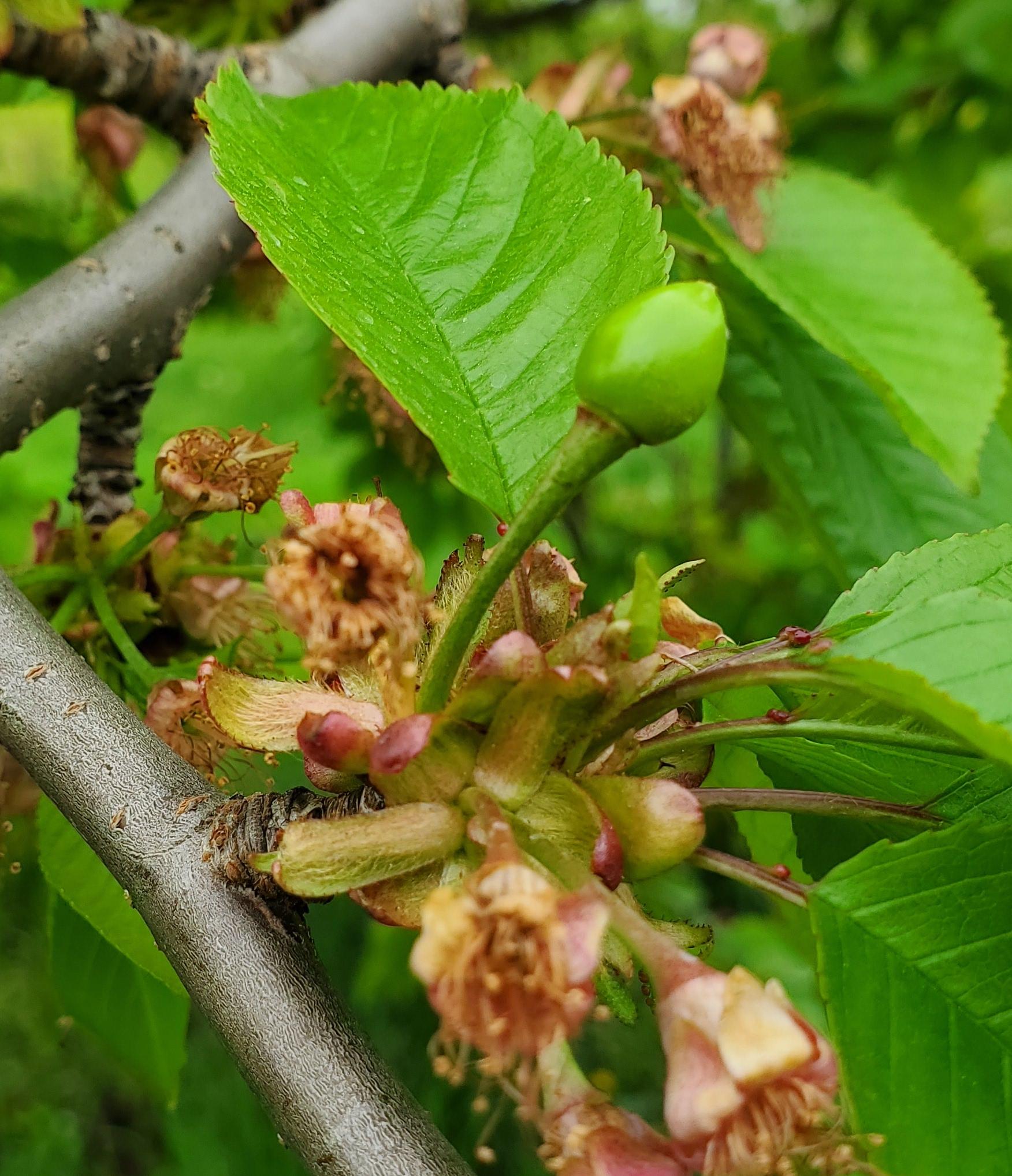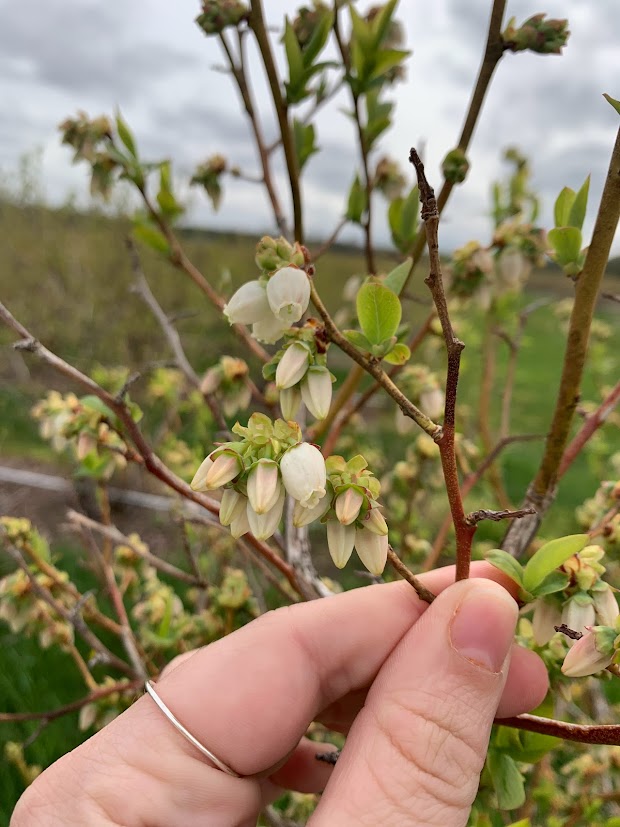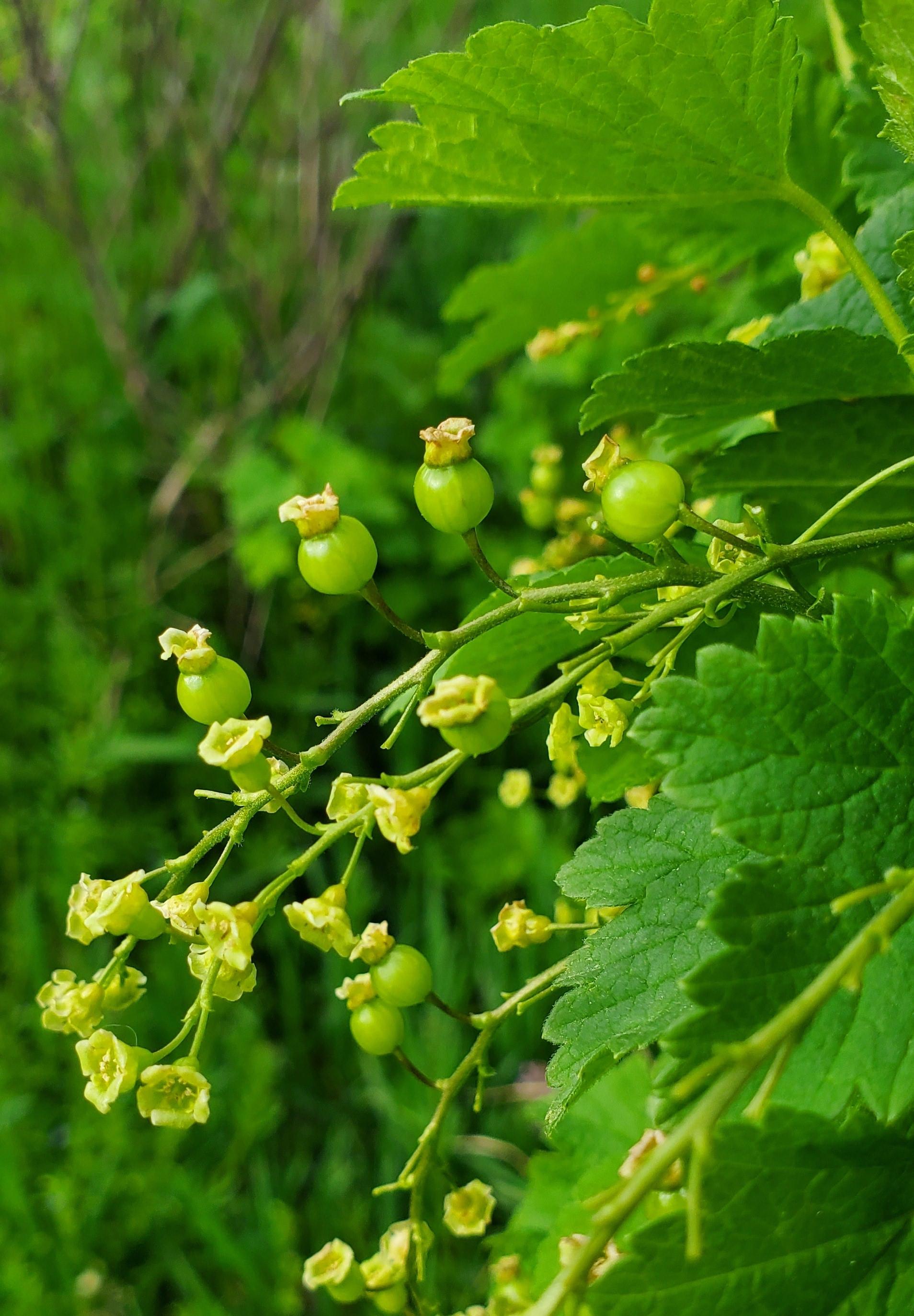Southwest Michigan fruit update – May 9, 2023
Stone fruit are largely finished with bloom. Apple and blueberry bloom is now underway.

Weather
Last week started cool but warmed up quickly. The weekend saw high temperatures in the mid-70s for much of the region. Lows were in the upper 50s. Scattered showers on Saturday (May 6) and Sunday nights resulted in less than a quarter inch of rain for most of the area.
According to historic records at the Southwest Michigan Research and Extension Center, we are past the last hard freeze (below 28 degrees Fahrenheit) dates of the year. We still have the chance to see morning frosts for another couple of weeks.
The region saw an average number of growing degree days (GDD) last week, 86 GDD base 42 and 49 GDD base 50, respectively. We are very close to the long-term average.
|
Southwest Michigan GDD summary from March 1 – May 8, 2023 |
|||
|---|---|---|---|
|
Station |
GDD 42 F |
GDD 45 F |
GDD 50 F |
|
Benton Harbor (SWMREC) |
412 |
324 |
215 |
|
Lawton (Lawton) |
398 |
310 |
204 |
|
Fennville (TNRC) |
349 |
268 |
173 |
|
Average for the SW region |
396 |
309 |
203 |
|
Average last week |
310 |
237 |
154 |
The next week should be seasonable and calm. High temperatures will be in the low to mid-70s for most days. A low-pressure system will be pushing through the area beginning Saturday, May 12, and through the weekend, bringing significant chances of rain.
The 14-day forecast predicts a significant cooldown next week. There are no frost warnings for next week at this time, but for sensitive, low-lying crops, be prepared in case frost predictions are announced.
Tree fruit
Temperatures have normalized somewhat but still not great for pollination of fruit crops. Oriental fruit moth catch has jumped up significantly from very little activity last week and before. No reports of plum curculio damage to fruit but that could change quickly this week. Tarnished plant bug and plum curculio are expected to be very active when evening temperatures start to climb.
Apricots fruit are out of the shuck. Crop prospects are fair to good. Plum curculio is a threat now.
Peach and nectarine growth stages range from petal fall to in the shuck in central Berrien County. Swelling of developing fruit and drop of unsuccessful flowers are becoming evident. Plum curculio, tarnished plant bug and oriental fruit moth are the targets for petal fall sprays. We are seeing a few leaves with bacterial spot symptoms of water-soaked areas. The need for bacterial spot management generally becomes more important after bloom to protect leaves from becoming a source of infection for fruit after shuck split. Shift from copper to oxytetracycline for bacterial spot treatment generally should start when fruit come out of the shuck to reduce potential phytotoxic effects of copper. Peach leaf curl symptoms are being reported in upper Indiana and should be seen soon in lower Michigan.
Cherries are in the shuck for tart and emerging from the shuck for sweet cherry in Berrien County. Cherry leaf spot is the primary disease concern now. Plum curculio will become a concern as cherries emerge from the shuck.

In plum, fruit are in the shuck and visibly swelling in central Berrien County. Disease coverage concerns are both black knot and brown rot. Like other stone fruit, management of plum curculio starts at petal fall.
Apple range from full bloom to 5 mm fruit diameter (e.g., Zestar), depending on the variety and location. The Cornell apple carbohydrate model is available in the apple section on Michigan State University Enviroweather to help timing thinning sprays. Scab symptoms could be showing in Allegan County due to an infection period in mid-April.
Disease management concerns now are scab, powdery mildew, rust and fire blight. Fire blight management will be a concern later this week with the return of warm weather and rain. Tiny fruit tree leaf roller larvae are webbing and feeding on leaves. Apple flea weevils are actively making holes in leaves and blossoms in organic and abandoned apple trees.
Pear (Bartlett) fruit are ranging from 5 to 7 mm diameter in the south end of the region. Scab and pear psylla management are the major concerns. Fire blight management is usually needed when rain and temperatures above 60 F occur during bloom.
Small fruit
Grape shoot lengthening continues on concord juice grapes and early hybrids like Marquette. Advanced areas have shoot lengths of 4-6 inches. Other hybrids and early vinifera varieties are at bud burst or one to two open leaves.
With the warmer temperatures last week, the freeze damage from late April has become more noticeable. Wine grape prospects still look good. Juice grapes with good air drainage also appear in good shape.
The disease focus at this time is on phomopsis, black rot, anthracnose and powdery mildew. With the mild winter, expect high levels of surviving inoculum on shoots, dried clusters and canes. Generally wet conditions are necessary for disease development. Powdery mildew is the exception. It prefers humid conditions with no rain and average temperatures in the 60s and 70s. This weekend may be conducive to disease development.
Blueberry leaf buds have opened. One to two leaves are visible. Fruit buds are separating. Bloom is beginning. Bees have begun to be delivered, with the most advanced sites in the south already being at full bloom and more northern sites just beginning to bloom. The window for application of copper, Sulforix or lime sulfur products to suppress early season diseases is closing. Be prepared to start scouting for mummy berry soon. As leaves expand, mummy berry and phomopsis shoot strikes are the main disease focus.

Strawberries have greened up and new leaves continue to emerge from the crown. Early sites where strawberries are being grown on plastic mulch are more advanced. Some blooms have been seen in those situations. Open fields are not as advanced with flower trusses still protected in the ground or just starting to emerge. Growers are looking at early season herbicides to control overwintering weeds. When selecting an herbicide, make sure and check the pre-harvest interval (PHI). We are getting to the part of spring where some herbicide PHIs are cutting it close to predicted harvest dates.
Bramble buds have separated from the cane and are starting to open. Some early varieties have expanded leaves.
Currants and gooseberries are blooming.

Hops are being strung now. Early bines are being mowed or chemically removed. This prepares the plants to focus on later-growing bines that will be more productive.
Announcements
Our regular southwest Monday fruit IPM updates are once again a hybrid format. The meetings are held in-person with virtual attending also available online. Our first meeting was Monday, April 10, at 5:30 p.m. and will continue through the rest of the season. You need to register to receive the Zoom link and password for these meetings. The webinars are free and one pesticide applicator credit is available for each meeting. The same Zoom link will be used with all the Monday meetings—you only need to register once.
Derek Plotkowski, the fruit educator in southeast Michigan, is organizing an Orchard and Fruit Production Classifieds & Exchanges service. Looking for something that you can’t get ahold of in time? Maybe one of your neighbors has some on hand. Have extra of something you’d like to offer? Fill out this form and we’ll add your needed or extra items to the Orchard Classifieds/Exchanges list. The items currently on the exchange can be found here: Orchard Classifieds and Exchanges.
This work is supported by the Crop Protection and Pest Management Program [grant no 2021-70006-35450] from the USDA National Institute of Food and Agriculture. Any opinions, findings, conclusions, or recommendations expressed in this publication are those of the author(s) and do not necessarily reflect the view of the U.S. Department of Agriculture.



 Print
Print Email
Email




